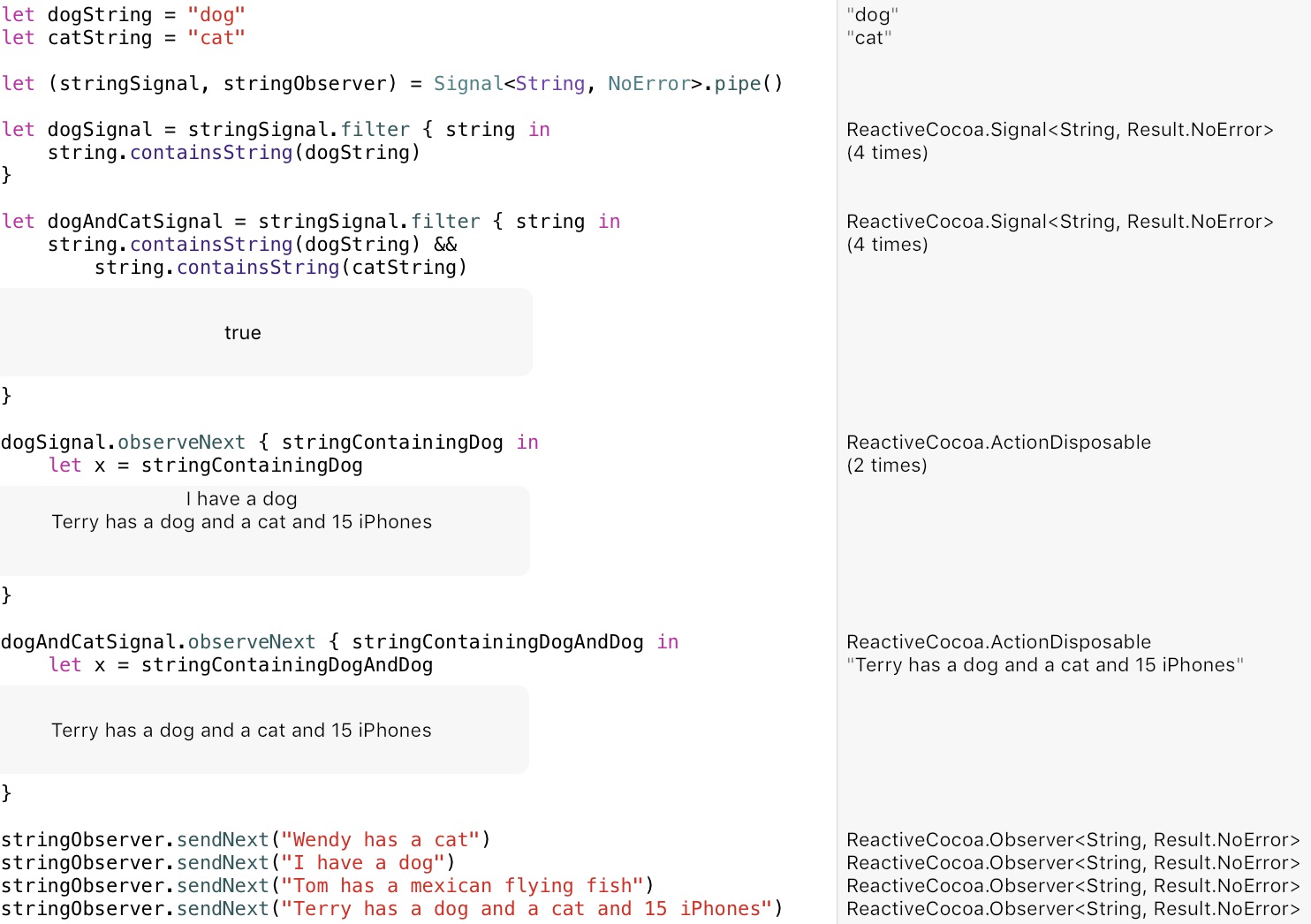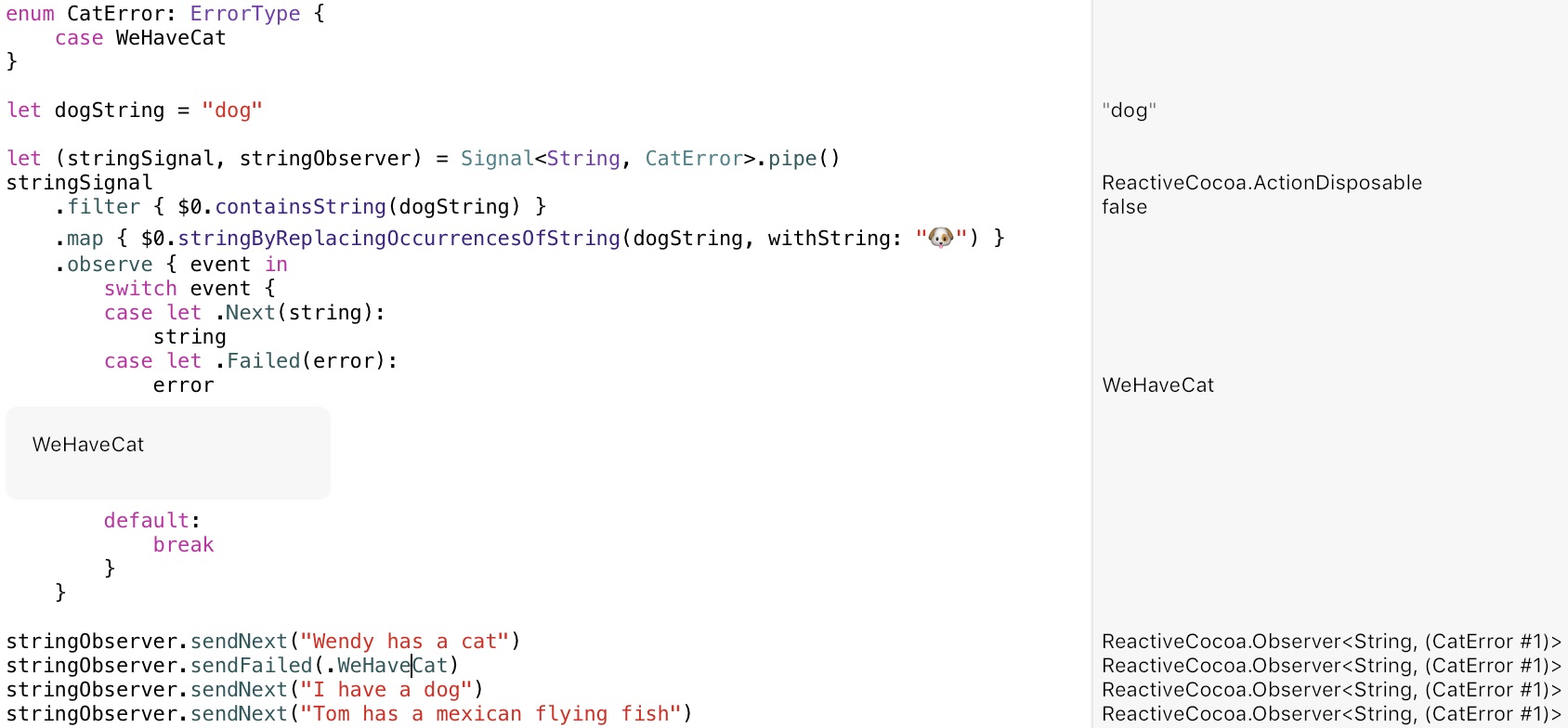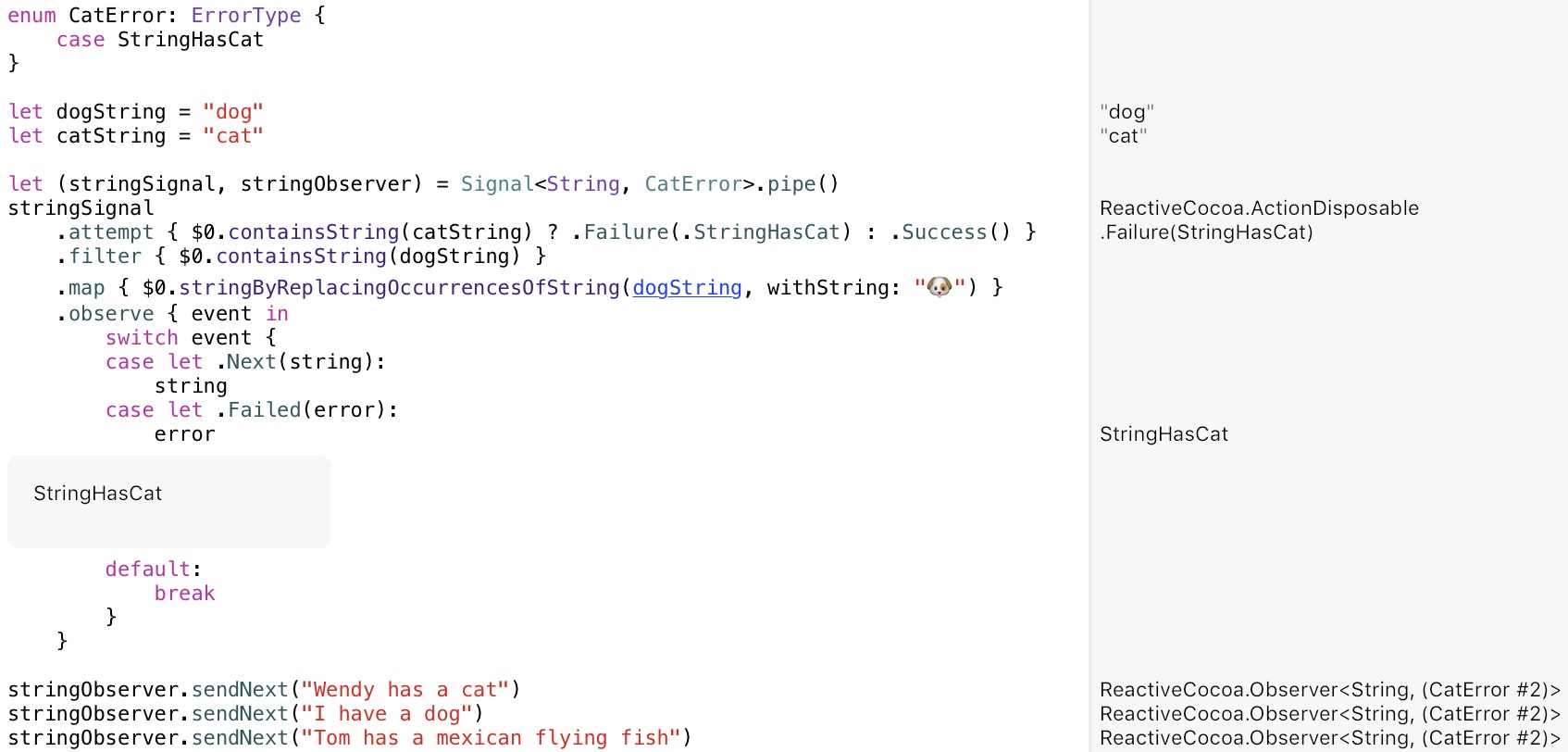Introduction to Reactive Cocoa 4 (pt 2) - Smooth Operators
29 May 2016Note: This is really outdated. Please see my newer posts on the topic!
Before we begin pt 2 of the ELI5 idiots guide to Reactive Cocoa 4 for dummies who are fluent in Swift 2 but know nothing about any version of Reactive Cocoa (though maybe know a little bit of what FRP is all about) (or TEIGRC4FDWAFS2BKNAAVRC for short), I’d like you to press play on the following video:
Smooth Operator (Official Video) - Sade
Multi Signal Structures
Transforming Values with Operators
So far, everything we’ve done with Signals has been pretty basic. And while there is some real world use for them already, it’s still not useful enough to start bowing down before the FRP gods. But you see, this is by design. We have these really simple blocks that we use to build complex data flow structures that are expressed very concisely and neatly. How do we join these blocks together? Operators.
Operators transform the Values from Signals for different uses and contexts. When you transform a Signal, ReactiveCocoa gives you a new Signal which fires the transformed Events, so they can be chained. This is very much like the functions Swift gives us for SequenceTypes: filter, map, flatMap etc. As you already know (and if you don’t, get ready for the 💣), these apply to a SequenceType and return a new object of the same SequenceType, so they can be chained. In other words, if you filter an Array, you get a filtered Array in return, and you can directly map or whatever the result without assigning to a new var.
let longNamesCount = users
.map { $0.name }
.filter { $0.characters.count > 10 }
.count
Operators function in the same way - chain them together to your hearts content. This lets you construct complex flow structures in a very concise way, all in the one place.
A simple demonstration of an operator in action: Say you have a Signal that has String values on it. Now, whenever that Signal has a String on it that contains the word “dog”, you want to be notified.
Here’s the wrong way to do it (but the only way we know how at this stage):
Seems reasonable? Well… not quite. I mean it works, but it doesn’t allow for any extensibility. For example, how do we notify more than one object that the string contains the word dog? Our observeNext closure (or the stringContainsDog function) needs to know about any object that needs to be notified. That sucks.
And what about other scenarios, like when a string contains “dog” and “cat”? Do we need a new external function for this? What if a different object needs to be notified on the new scenario? Here comes the giant flying spaghetti code monster…
What if I told you Reactive Cocoa has your back? 🕶
Did we just solve each one of those hairy problems in one go? In the same number of lines?? 😮
Say hello to operators.
Here we’re using the filter operator. Generally speaking, this operator receives Next Events from the Signal it’s attached to, and filters their Values using the predicate closure given. So in our case, take the Strings that come in from the stringSignal and filter them by “contains ‘dog’”. Notice how this logic moves out of our observeNext.
⛓Chains ⛓
This isn’t the whole picture though. Operators actually return brand new Signals that fire Next Events using their transform. So in the case of filter, it fires when the predicate returns true.
This is truly awesome for a few reasons, but first of all it means we can observe this new Signal to be notified when the string contains a dog, but not touch the behaviour of the Signal we’re filtering. Signals are immutable, and if we don’t introduce any side effects then they always do the same thing. Hey look, your code just got way easier to read and understand!
With operators, you can not only set up very simple flows like the above, but also very complex flows that are still easy to understand. And all parts of the flow are observable by anything. Woah 🎇
In fact, we can actually make this flow even more concise by just chaining it all together!
So nice. And because the return types of operators vs observe functions force the chain the follow the same pattern every time, we can reason about the flow easily. Create, transform, observe. Events start at the top and flow to the bottom. They don’t jump between different objects or files or anything like that (unless you want them to).
So, what about the extra notification, when the string contains “dog” and “cat”?
It’s too easy right? No side effects, no coupling, easy extension.
What if we don’t really want to get notified per se, but just want to replace the word “dog” with a 🐶 emoji?
Pretty simple - we use the map operator which has the exact same “return a Signal that fires transformed Events” characteristic. So, our map creates a new Signal that fires Next Events with the word “dog” replaced with 🐶. We also just inserted it into our chain, no bother.
Error, Error, 123
What happens if a Signal sends a Failed Event?
You can see that the cat ruined all the fun 😠. The Failed Event caused the first Signal to stop before James had his “dog” transformed into emoji form. So the Failed Event halted the flow of Events.
Also notice that so our Signal can throw a CatError, we have to specify this when creating the Signal. Strong typing and all that.
That was kind of a contrived example though - we should automatically fail rather than tell the Signal to fail. The string “Wendy has a cat” should automatically throw the .WeHaveACat Failed Event right? Operators to the rescue:
We can use the attempt operator to check for the error case and throw if it’s met. Even though Success doesn’t pass any value, it indicates that all is well and Events can continue down the chain untouched. Then it’s just business as usual.
Notice how all the logic for transforming our Strings is all in the same place, including error handling? And it’s totally decoupled from anything that needs to react to the transformed Strings or errors. Can I get a hell yeah?
In the next installment we take things next level: SignalProducers. Until then! 👋






